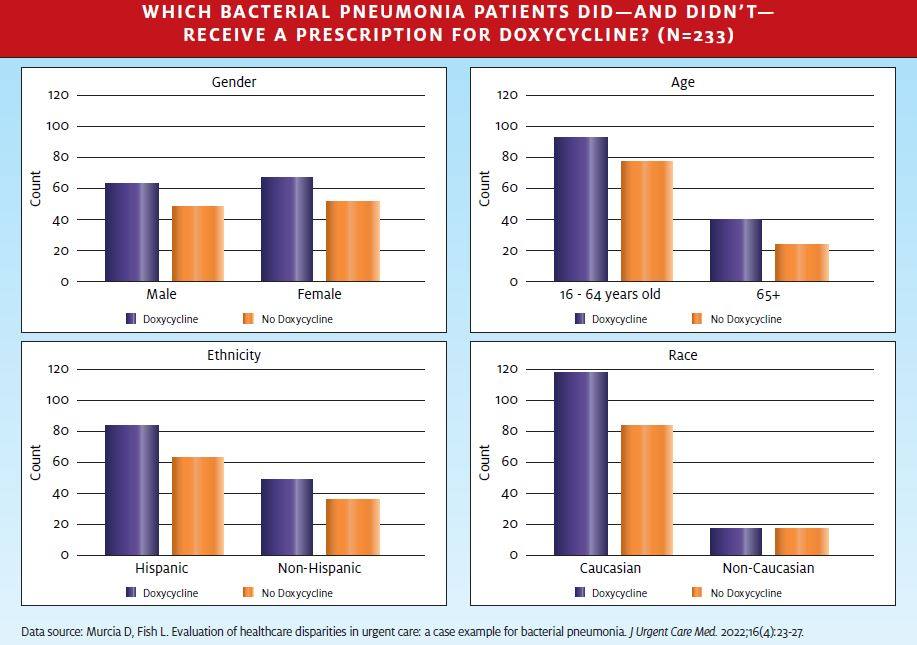Published on
If you read Evaluation of Healthcare Disparities in Urgent Care: A Case Example for Bacterial Pneumonia—see page 23 of this issue—you know that the proportion of appropriate prescriptions written for an on-label medication (in this case, doxycycline for bacterial pneumonia) may differ among various demographic groups. While the conclusions of that study do not necessarily make a cause-and-effect connection, the data should inspire some analysis as to possible rationale for differences for care of various patient groups.
The graphs below illustrate how many patients in various groups did or did not receive a prescription for doxycycline in accordance with institutional guidelines at the Peña Southwest Urgent Care Clinic in Colorado. It’s interesting to note that a small majority of patients received a prescription for doxycycline in every comparison pairing except for Race, in which the non-Caucasian group was split evenly between receiving and not receiving a prescription.

